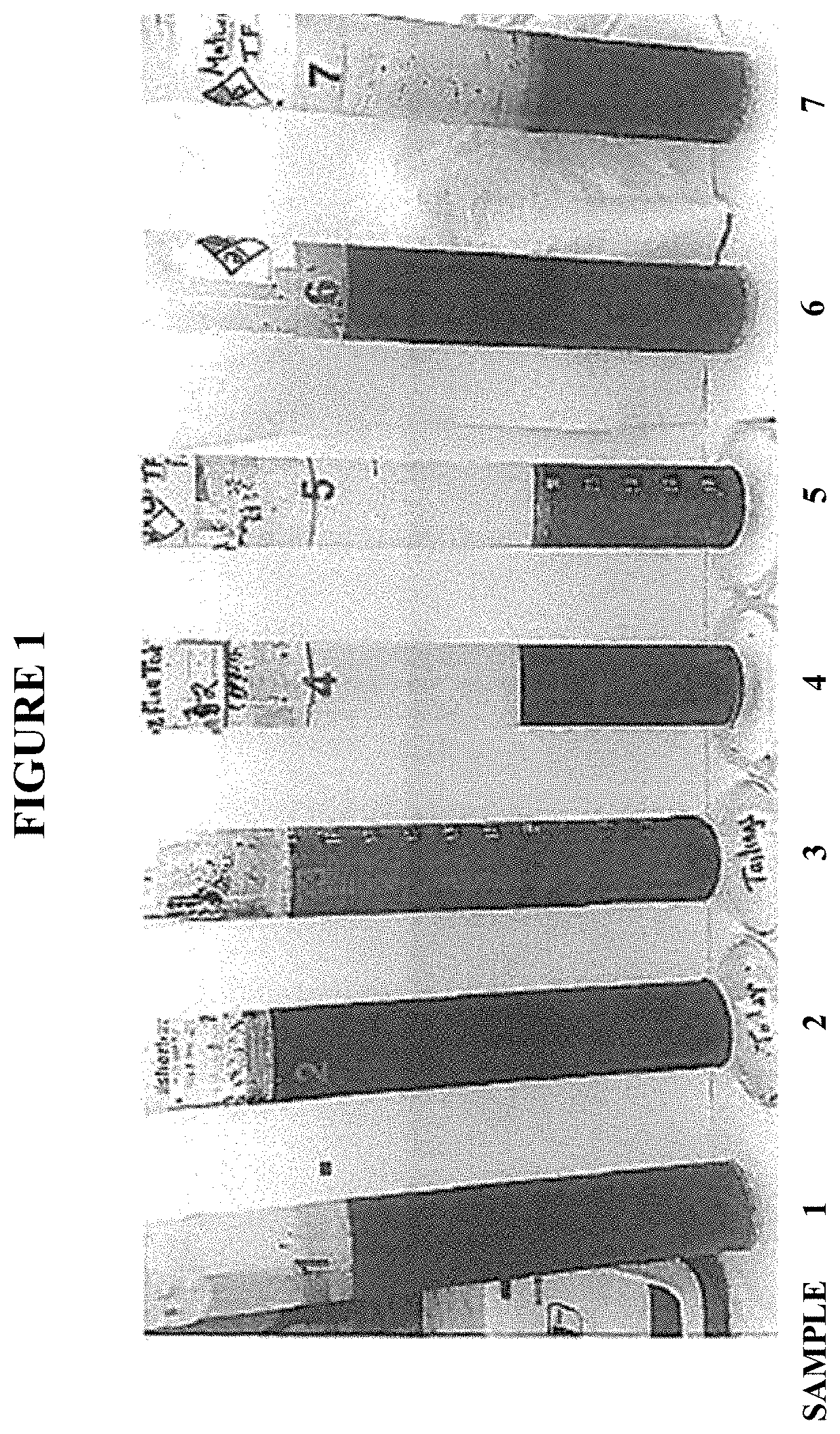Methods of treating tailings
a technology of tailings and oxidants, applied in the field of tailings treatment, can solve the problems of reducing the overall toxicity of tailings, generating and releasing hydrogen peroxide, etc., and achieve the effect of promoting the effect of one or more oxidants and promoting the breakdown of polymers
- Summary
- Abstract
- Description
- Claims
- Application Information
AI Technical Summary
Benefits of technology
Problems solved by technology
Method used
Image
Examples
example 1
[0064]Both Flocculant A alone and Flocculant B alone (see Table 1: Sample 1 and Sample 6) were able to flocculate the MFT at the dosage of 400 ppm (see Table 2), however, the turbidity and COD values remained high (see Table 2, wherein differences in turbidity and COD values from the sample supernatants are presented). With the addition of the oxidant calcium peroxide, along with Flocculant A, no significant changes were obtained in COD, and turbidity only slightly decreased (see Table 2: Sample 2). However, when both the coagulant ferrous chloride and the oxidant calcium peroxide were combined after flocculation of MFT, a significant decrease in both COD and turbidity was observed (see Table 2: Sample 3, Sample 4, and Sample 5). This effect was enhanced at higher concentrations of both coagulant (ferrous chloride) and oxidant (calcium peroxide), which suggested that there might be a higher capture of solids in the flocs formed and a reduction in the organic load in the supernatant ...
example 2
[0066]In this example, two commercially-available flocculants (Flocculant A, and Flocculant C, which is a medium charge, low molecular weight (“MLMW”) anionic polyacrylamide) were evaluated as part of tailings treatment compositions with and without oxidants and coagulants, in two different tailings substrates. The procedure described above was used in this example, with the following exceptions. In Samples A and B, the MFT sample was prepared (diluted) as described above, while in Samples C and D, the MFT was used in its undiluted form (24.4% solids). For Samples A and B, the polymer solutions were added to the tailings material to provide a concentration of 400 ppm (see FIG. 2, Table 3, and Table 4: Sample A and Sample B). In Samples C and D, the polymer solutions were added to the tailings substrate to provide a concentration of 1000 ppm.
[0067]The results that were obtained in this Example are presented FIG. 2 and Table 4 and demonstrated a similar trend as compared to the other ...
PUM
| Property | Measurement | Unit |
|---|---|---|
| COD | aaaaa | aaaaa |
| COD | aaaaa | aaaaa |
| COD | aaaaa | aaaaa |
Abstract
Description
Claims
Application Information
 Login to View More
Login to View More - R&D
- Intellectual Property
- Life Sciences
- Materials
- Tech Scout
- Unparalleled Data Quality
- Higher Quality Content
- 60% Fewer Hallucinations
Browse by: Latest US Patents, China's latest patents, Technical Efficacy Thesaurus, Application Domain, Technology Topic, Popular Technical Reports.
© 2025 PatSnap. All rights reserved.Legal|Privacy policy|Modern Slavery Act Transparency Statement|Sitemap|About US| Contact US: help@patsnap.com


